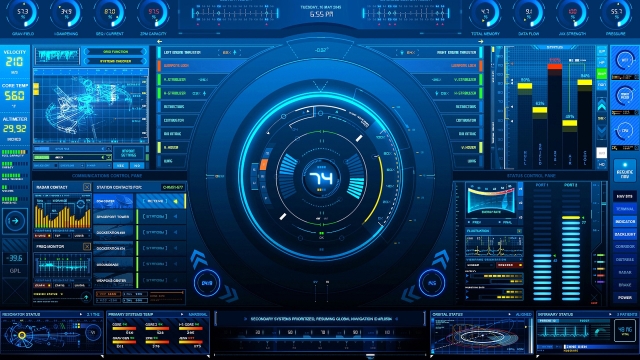![]()
Deepfake technology has emerged as a powerful tool, raising both fascination and concern. With its ability to manipulate and alter videos, it opens a whole new realm of possibilities, blurring the lines between fact and fiction. As we delve deeper into its capabilities, we find ourselves at the precipice of a new era, where reality can be subtly tweaked and distorted through this innovative technology.
At its core, deepfake technology leverages artificial intelligence to create highly realistic videos that convincingly portray individuals saying or doing things they never actually did. The sophistication of this technology has reached such a level that distinguishing real from fake has become an increasingly challenging task. This has profound implications when it comes to the spread of misinformation, the erosion of trust, and the potential for malicious use.
The rise of deepfake technology presents us with a double-edged sword. On one hand, it has immense potential in various industries, including entertainment, advertising, and even education. Imagine a world where actors can be seamlessly inserted into historical events for a more immersive learning experience or celebrities can effortlessly star in multiple movies simultaneously. This technology opens up a realm of creative possibilities, allowing us to blur the boundaries of imagination and reality.
However, as this technology becomes accessible to a wider range of users, we also face its darker implications. The potential for widespread misinformation and manipulation is a pressing concern. Deepfakes can be deployed to tarnish reputations, incite political unrest, or even cause social chaos. The ability to fabricate videos that appear remarkably authentic can easily deceive individuals, leading to serious consequences both on an individual and societal level.
As we navigate this new era of reality manipulation, it becomes imperative to develop robust tools and strategies to detect and combat deepfakes. From technological advancements to ethical considerations, we must collectively address the challenges posed by this fascinating yet destabilizing technology. Only by doing so can we strike a delicate balance between harnessing its creative potential and safeguarding the integrity of our digital world.
Understanding Deepfake Technology
Deepfake technology is a rapidly advancing field that allows for the creation of highly realistic manipulated media. By harnessing the power of artificial intelligence and machine learning algorithms, deepfake technology enables the creation of convincing fake images, videos, and even audio recordings. This technology has ushered in a new era of reality manipulation, raising concerns about the potential for misuse and the erosion of trust in media.
One key aspect of deepfake technology is its ability to swap faces in a video, making it appear as though someone else is speaking or performing actions that they never actually did. Through a process called face mapping, the algorithm analyzes facial features and expressions from a source image or video and seamlessly blends them onto a target image or video. With this technique, it becomes incredibly challenging to differentiate between authentic and fabricated content.
https://faceswap.akool.com/
Another noteworthy application of deepfake technology is the synthesis of realistic speech patterns. By training on vast amounts of audio data, the algorithm can generate synthetic voices that closely match the original speaker’s tone, pitch, and accent. This opens up possibilities for creating fake audio recordings, such as mimicking someone’s voice or altering what they say, further blurring the line between truth and deception.
While deepfake technology has garnered attention for its potential negative implications, it is also being used for positive purposes, such as in the entertainment industry for visual effects or dubbing. However, the ease of access to deepfake tools and the speed at which the technology is advancing raise concerns about its misuse, including spreading disinformation, defaming individuals, or even implicating innocent people in false scenarios.
In the following sections, we will delve deeper into the ethical considerations surrounding deepfake technology and explore potential countermeasures to address the challenges it presents. As the prevalence of deepfakes continues to rise, it is crucial to understand the underlying technology and its implications to navigate this new era of reality manipulation.
Implications of Deepfake Technology
Deepfake technology, characterized by its ability to generate highly realistic yet fabricated multimedia content, presents a myriad of implications that extend to various aspects of society. From the realm of politics to personal relationships, the advent of deepfakes has introduced a new era of reality manipulation, raising concerns and mysteries that need to be unraveled.
One of the most prominent implications of deepfake technology lies in the domain of misinformation. The astonishing realism achieved through deepfakes enables individuals with malicious intent to spread false narratives and deceive the masses. Manipulated videos or audio clips can be used to fabricate events or statements, posing a significant threat to the credibility of news sources, public figures, and institutions. The potential for malicious actors to exploit deepfakes for their own gain calls for increased vigilance and critical thinking in consuming media content.
Moreover, the rise of deepfake technology raises serious concerns regarding privacy and consent. With the ability to superimpose someone’s likeness onto another individual’s body, deepfakes have the potential to violate personal boundaries and ethical principles. Unauthorized use of someone’s image or voice opens the door to a range of privacy issues, as individuals can be subjected to false accusations or humiliation without their knowledge or consent. The challenge of protecting digital identities and combating the misuse of deepfakes remains a pressing concern for lawmakers and technology developers alike.
Beyond the individual and societal impacts, deepfake technology also poses risks to the stability of democratic processes and international relations. As political figures become targets for deepfake manipulation, the potential consequences include eroded trust, increased polarization, and escalated tensions between nations. The ability to create convincing videos that can manipulate public opinion raises questions about the authenticity of evidence in legal proceedings or political disputes, further blurring the lines between truth and fiction.
In conclusion, the implications of deepfake technology are far-reaching and multifaceted. From the propagation of misinformation to privacy concerns and threats to democratic processes, the manipulative capabilities of deepfakes have raised significant ethical and social challenges. As this technology continues to evolve, it is crucial that society remains vigilant, promoting responsible use and developing strategies to counter the negative impacts of this rapidly emerging field.
Combating the Spread of Deepfakes
Deepfake technology poses a significant challenge in an era where reality can be easily manipulated. As the use of deepfakes becomes more prevalent, it is crucial to explore ways to combat its spread and protect the integrity of visual content.
One approach to tackling this issue is through advanced detection and verification techniques. Developing sophisticated algorithms and AI models that can recognize and flag deepfakes will be vital in curbing their dissemination. By detecting discrepancies in facial movements, voice patterns, or inconsistencies in lighting and shadows, these technologies can help identify and filter out manipulated content.
Collaboration between technology companies, social media platforms, and law enforcement agencies is another crucial aspect in the fight against deepfakes. By joining forces, they can establish guidelines and protocols to ensure the prompt removal of deepfake content from the internet. Additionally, fostering partnerships with research institutions and experts in the field can facilitate knowledge sharing and the development of effective countermeasures.
Public awareness and education also play a significant role in combating the spread of deepfakes. By educating the general population about the existence and potential dangers of deepfakes, individuals can become more discerning consumers of digital content. This can involve promoting media literacy, teaching individuals how to spot potential manipulation cues, and encouraging critical thinking when consuming online information.
In conclusion, combating the spread of deepfake technology requires a multi-faceted approach. Advanced detection and verification techniques, collaboration between various stakeholders, and public awareness and education are all vital components in the ongoing battle against this growing threat to the integrity of visual media.





